Tetradons (tetraodones): types and recommendations for content

For many years, the aquarium has been a beautiful piece of furniture that can be found not only in private apartments, but also in social facilities. An artificial reservoir not only aesthetically decorates the room, but also has a beneficial effect on the climate and atmosphere. In order for the reservoir to please its owners with beauty and decorativeness, it is necessary to spend a considerable amount of effort, time and financial resources.
In specialized stores, you can purchase not only the necessary decor items, but also all kinds of aquatic inhabitants. Professional aquarists are constantly on the lookout for new exotic species. One of them is the tetraodons.
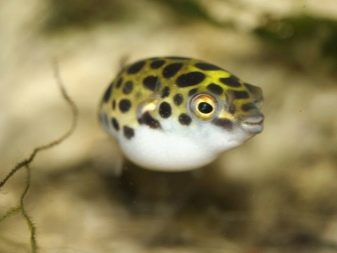
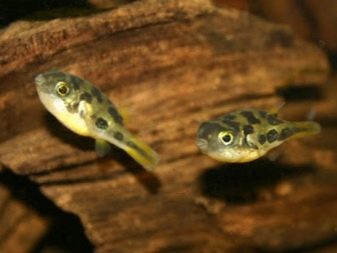
Description
Tetradon (tetraodon) is an exotic aquarium fish that belongs to the blowfish family, and is also one of the representatives of omnivorous predators... In natural tropical and subtropical reservoirs, experts count about 200 species of this family. Most often, this species can be found in the waters of Asia, Africa and Oceania. In comfortable living conditions, pets can delight their owners from 4 to 7 years. The behavior of representatives of this species is characterized by increased aggression and conflict, as well as unwillingness to establish contact with other inhabitants of the reservoir.
The peculiarity of the representatives of the blowfish family - changing the shape of the body depending on the internal emotional state. For a calm and balanced state, an elongated body is characteristic, but even with the slightest psychological changes, the aquatic inhabitant swells and becomes like a huge ball with sharp thorns. A special bag under the digestive system helps the fish turn into a ball, into which a large amount of water gets into at the moment of fright.
This feature helps the aquatic inhabitant to protect themselves from predators that are afraid to swallow a prickly and poisonous ball.
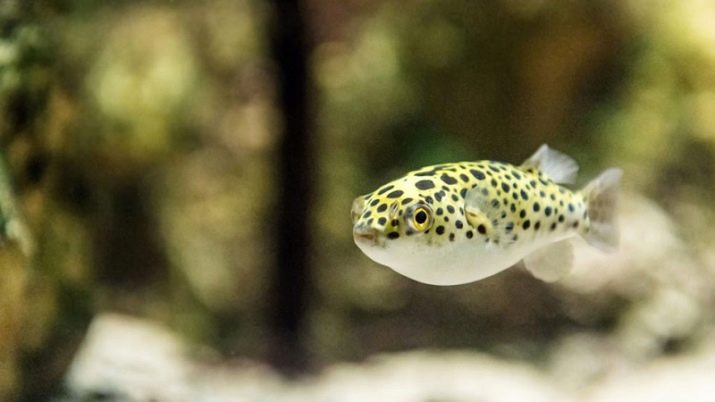
The entire surface of the skin is covered with sharp thorn-like outgrowths that fit snugly to the body. In this species, the scaly layer and pelvic fins are completely absent, and the dorsal outgrowth is located closer to the tail. Due to the presence of a small oral cavity and fused jaws on a large and powerful head, the tetraodon received a second name - four-toothed. The peculiarity of the structure of the jaw allows the fish to chew almost any food. Another external feature is the large and convex eyeballs and the presence of peripheral vision.
The color range of this species is very diverse and depends on the characteristics of the subspecies. The most popular shades are brown, green and yellow. The surface of the body is decorated with a large variety of spots. The shade of males is usually much brighter and richer than females.... The body length of an adult is in the range from 5 to 80 cm.

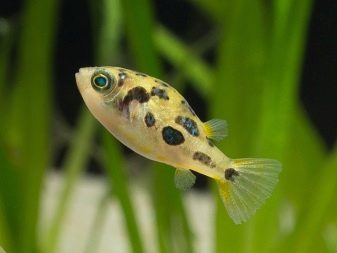
Varieties
Tetradon has a large number of subspecies specimens, which differ in size, color and character traits. For keeping and breeding in artificial reservoirs, professional aquarists recommend paying attention to the following types.
- African - fish that can be found in natural conditions on the territory of the Congo. The average length of adults is 10 cm. The color palette of the skin is presented in all shades of yellow and brown. A distinctive feature is the presence of yellow spots and streaks.
- Eight - unusual fish were brought from Asia (from the Sunda Islands). This species got its name due to the presence of two spots on the back, which resemble a figure eight. The main colors in the color are dark brown and black. The belly area is always white. Each individual has individual yellow spots and stains on the entire surface of the body.
The average body length is 11 cm. The body size of females is always larger than that of males. Adults have an aggressive and belligerent nature that enables them to protect their offspring.
- Green - the most popular and beautiful species for breeding in artificial reservoirs, which requires increased attention. Color - yellow-green with shapeless spots. The maximum body length can reach 20 cm. Newborn fry feel comfortable in fresh water, but adults need a salted habitat. Like all tetradons, the green species is very aggressive and toxic; the neighborhood with it is contraindicated for many fish.
Pisces have a high level of intellectual ability, as well as the ability to recognize their owner. A distinctive feature is the constant growth of teeth, to adjust the length of which it is necessary to regularly feed the pet with solid food.
- Dwarf (yellow) - a beautiful species that has a golden and shiny body color with green or brown spots. Natural habitat - India, Malaysia, Indonesia and Indochina. This species does not grow more than 6 cm. The males have a red belly and a bright body color. Healthy offspring from this species can be obtained even at home.
- Kutkutia - a dangerous and very poisonous species that can grow up to 20 cm. The color shade is yellow or green with rare spotting. Placing this species, you must use the utmost care and attention.
- Fahak - a large species, the length of which can reach 50 cm. This species should be settled only in very large aquariums and artificial reservoirs. The natural habitat is the waters of the Nile, Niger, Gambia, Chad, etc.
- MBU - the largest species that can grow up to 80 cm. Natural habitat - African reservoirs. This species can be seen only in special oceanariums due to its large size and the presence of poison not only in the thorns, but also in the pulp.
- Suwatti Is a freshwater pig-nosed species that lives in the rivers of Asia. Features - gray-brown color and the presence of an arrow-shaped spot on the surface of the head. Habitat - thickets of the seabed, where fish practically merge with the ground and hunt down their prey.
- Red-eyed - a miniature and clumsy fish, the length of which does not exceed 5 cm. The entire surface of the body is covered with hard skin, and the fish uses its beak-like mouth to gnaw the shells of sea inhabitants. A distinctive feature is red eyes.
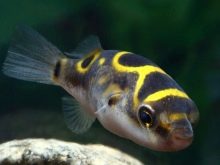
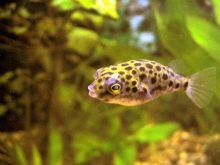
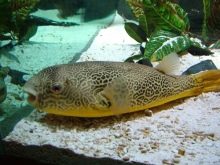
Compatibility
All types of puffer fish get along very poorly with other inhabitants of the reservoir. To protect their territory, tetradons arrange regular fights and fights, which often lead to the death of rivals. To minimize conflict situations, it is better to keep this species in a separate container and not be combined with other species. If this is not possible, then the most comfortable neighbors for this species are ototsinkluses and giant shrimps... The size of all neighbors, who are required to be able to move quickly, should significantly exceed the length of the tetradon.
For a variety of living creatures in the reservoir, some aquarists, together with tetradon fry, purchase tributes, rasbora, iris and discus. The joint growth and development of these species significantly reduce the aggressiveness of tetradons, however, when the first signs of fins deformation appear in other inhabitants of the aquarium, the experiment should be stopped immediately.
An unreasonable selection of the inhabitants of the reservoir can provoke the appearance of aggression in the tetradon, which can not only bite off the fins of an opponent, but also break it.
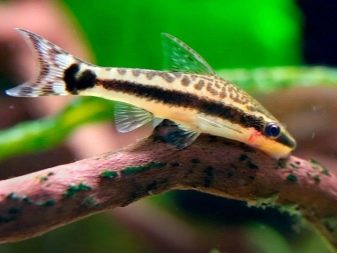

Growing conditions
Before deciding to buy a poisonous tetradon, you must carefully study the intricacies of its content and the rules of care. Experts do not recommend touching the fish's body, which is covered in toxic mucus, with bare hands. Due to the complexity of the content novice aquarists it is better to completely abandon this type of fish or give preference to less whimsical dwarf and green subspecies.
For a comfortable stay of a tetradon, you need to purchase an aquarium, the volume of which is not less than 100 liters and has rectangular shape. Aquatic inhabitants have a negative attitude to temperature fluctuations and prefer to be in the water, the temperature range of which is from + 22 to + 28 degrees... Acidity level should not exceed 9 units, and the water hardness should not rise above 21 dH. This species does not feel well in fresh water, so experts recommend adding some salt to it.
The level of illumination does not play a big role in the life of this species, but experts recommend not using bright lighting devices. The light should be slightly dim.
This species prefers to be located almost near the very bottom, therefore, the flow of water from the filter and aeration units should be minimal.
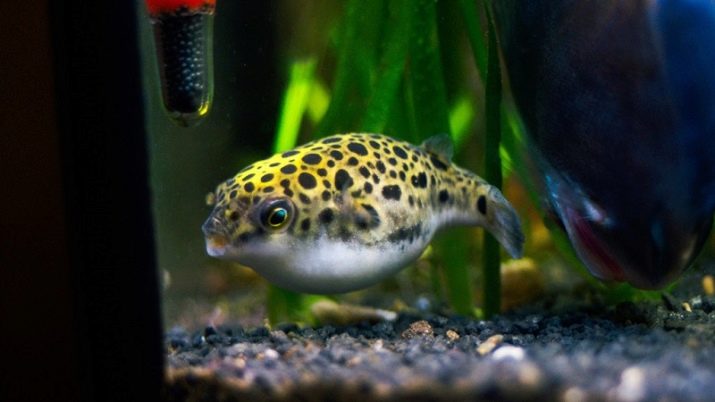
To create thickets and areas for spawning in the reservoir, the following aquatic plants must be planted:
- vallisneria;
- elodea;
- nymphea;
- lemongrass;
- fern;
- duckweed;
- riccia;
- cryptocoryne.
It is better to use fine-graded colored pebbles as the bottom soil. To give the pebbles a beautiful brown hue, aquarists recommend burying a few oak leaves in them. Cleaning the bottom with a siphon should be done daily.To reduce the temperature of the water in the summer, it is necessary to put plastic bottles with ice in the tank.
To decorate the reservoir, as well as to create additional places for refuge, experts recommend using artificial castles, driftwood, decorative fragments of various objects and beautiful stones.
To prevent damage to the skin on sharp edges, all objects must be carefully grinded.
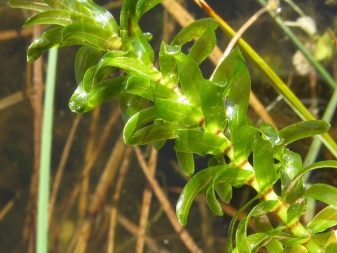
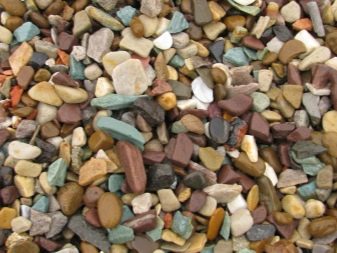
To maintain stable and comfortable living conditions for fish, every aquarist should have the following equipment:
- filtration unit;
- compressor;
- heating and lighting devices.
If basic sanitary and hygienic requirements are not observed, internal parasites may appear in aquatic inhabitants, which penetrate the intestines along with dirty water and low-quality live food. New inhabitants of the reservoir who have not gone through all the stages of quarantine can also become a source of disease. This fish species has a high level of sensitivity to nitrates, nitrites and ammonia. Experts recommend carefully studying the first symptoms of poisoning:
- enlarged and reddened fins;
- frequent ascent to the surface;
- constant feeling of lack of air.
In order to save the life of the pets, it is necessary to immediately transplant them into a clean container with filtered water, and thoroughly disinfect the soil, walls, decorative elements in the aquarium, and also be sure to completely change the water.
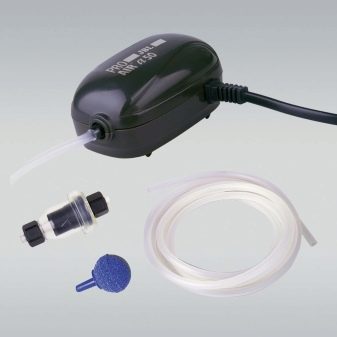
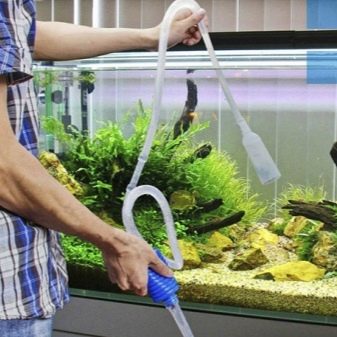
Feeding rules
For stable growth and development of tetraodon, as well as for obtaining healthy offspring, it is necessary to pay special attention to the diet of pets, in which protein food should prevail. The following ingredients are sources of protein for fish:
- snails;
- small shrimps;
- bloodworm;
- daphnia;
- tubifex;
- fry;
- water worms;
- small species of crustaceans;
- beef liver;
- fresh meat.
To maintain the vitamin and mineral balance, the fish should receive dry food for predators, as well as special vitamin complexes. The amount of food must necessarily correspond to the type and age of the fish. In case of a violation of the nutritional system, as well as in the case of an increase in feed volume, obesity may develop, the first sign of which is a swollen belly and faded color.
To prevent contact of fish with the owner, experts recommend using tweezers. Individuals whose diet consists only of dry food have a significantly shorter lifespan.
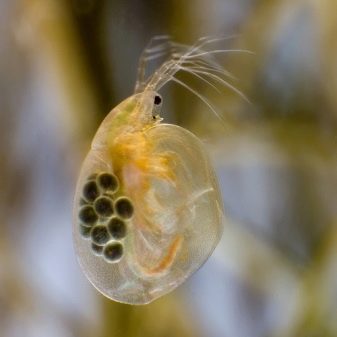
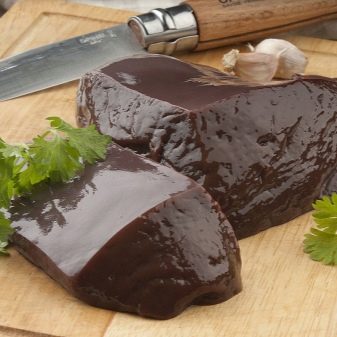
Reproduction
It is very difficult to independently obtain offspring from this species. Most subspecies reproduce only in special laboratories, as well as in their natural habitat. Sexual maturity of fish begins after the end of the first year of life. The most suitable species for home breeding is the dwarf, in which males are much larger than females. During the spawning period, males acquire a bright and rich color, and a red stripe appears on the belly.
One male is capable of fertilizing several females. Having several partners will help to significantly reduce the aggressiveness of the male. Each female is able to lay no more than 10 eggs. There should be only one male in one spawning grounds. If there are two or more males in the same reservoir, fights and skirmishes will constantly occur between them.
To obtain offspring, it is necessary to plant the selected pairs in a separate container and create the most comfortable conditions:
- an increase in water temperature by 2 degrees;
- an increase in the frequency of substitutions;
- the presence of flat stones for laying eggs;
- the creation of dense plantings of algae.
The males take on the responsibility for protection and care. 10 days after birth, the fry become completely independent and independent. Live dust is the first food for newborns.As you grow, you can diversify the diet of fish with brine shrimp nauplii, crustaceans and microworms. When creating the most comfortable conditions, offspring can be obtained from the green species, the females of which can lay up to 300 eggs.

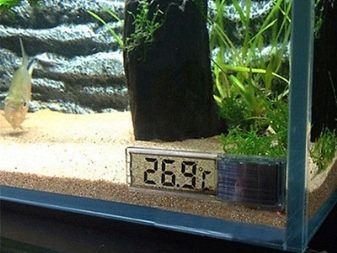
Before you buy your favorite aquarium fish, novice aquarists should definitely study its character and the intricacies of caring for it.
If you do not have experience and professional skills in dealing with complex and dangerous species, experts recommend abandoning the purchase of a tetradon and opting for more unpretentious and simple types that will bring no less joy and pleasure from communication.
For information on how to properly keep a black and green tetraodon in an aquarium, see the next video.








